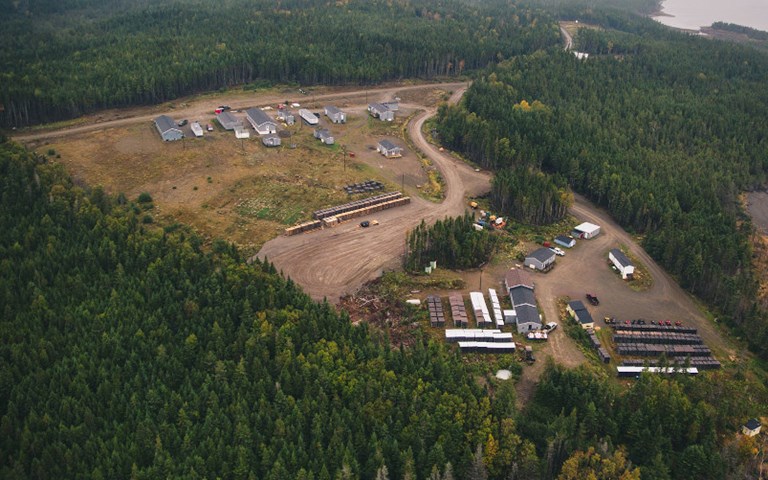The Valentine gold project is expected to produce 175,000 ounces per year. Courtesy of Marathon Gold.
On April 6, Marathon Gold reported the results of a recent pre-feasibility study for its flagship Valentine gold project in Newfoundland which, according to the company, could support a low capital cost and high rate of return open pit mine.
“We have taken the approach of identifying the optimum starting point for mining at Valentine, emphasizing highest rate of return and lowest risk, while recognizing that the large resource inventory and extensive exploration potential along strike and at depth offers plenty of opportunity for mine life extension,” Marathon president and CEO Matt Manson said.
Highlights from the study include an initial capital cost of $272 million with an after-tax payback of 1.8 years and expected capital costs for the life-of-mine coming in at $545 million. The study anticipates average life-of-mine total cash costs of US$633 per ounce and all-in-sustaining costs of US$739 per ounce.
Current proven and probable reserves total 1.87 million ounces from 41.05 million tonnes grading at 1.41 grams per tonne. Expected average annual production comes in at 175,000 ounces of gold per year for the first nine years of its 12-year life, according to the company, producing 54,000 ounces per year from years 10-12.
Related: Hudbay Minerals has released its updated plan for the Snow Lake region in Manitoba, increasing its production rate and mineral reserves significantly
The project will include a mill and tailings management facility, as well as a 300-person accommodation camp, a wastewater treatment plant, ditching and sedimentation ponds for water management and site roads. The mill is expected to process 2.5 million tonnes per year, followed by four million tonnes per year following a mill expansion.
“The Valentine project is expected to be Atlantic Canada’s largest gold producer,” Manson said. “Notwithstanding the current COVID-19 challenges, it represents the future of responsible resource development in Central Newfoundland.”
According to the study, the current timeline for project sees the completion of a feasibility study in the first half of 2021. Site construction is scheduled to begin on Jan. 1, 2022 with the first gold being produced by mid-2023.



